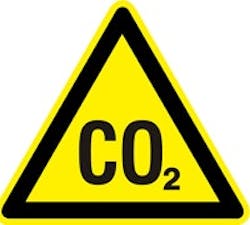Joe Feeley is editor in chief for Control Design and Industrial Networking. Email him at [email protected] or check out his Google+ profile.
I don’t often write about subjects that stray from the issues that clearly impact on your machine automation roles.
This time, though, I want to pass along some data presented at Schneider Electric’s Media Event last month regarding energy consumption. All of us have seen and heard troubling data on the subject. Much of the info just bounces off of our “I’m too busy to think about all this” protective shields.
Neil Rasmussen, senior vice president of innovation IT Business, displayed a slide of the Erlich Equation that for 35+ years has served to evaluate the environmental impact of the interaction of population, affluence and technology. I = P x A x T, with P = population, A = GDP/person, and T = lb of CO2 emission/unit GDP. Plug in today’s numbers — P=6.8 billion, A=$8K/person, and T=0.05 lb CO2/$1K — and you arrive at an Impact (I) of 28 Gigatons of CO2.
Then, presume no improvement in CO2 emissions per GDP, set population in 2050 at 9 billion, affluence to $12K/person, and you’ll find Impact at 54 Gigatons of CO2.
That pushes atmospheric CO2 levels above 450 ppm, raising temperatures and melting enough ice, reports the Intergovernmental Council on Climate Change (IPCC), to put NYC, southern Florida and most of coastal North Carolina underwater before 2100.
[pullquote]
Unless you’re counting on a population catastrophe or a plunge in world economic health, technology is the only way left to control CO2. “That means cutting emissions from 54 Gigatons to 5 by 2050 to hold at 450 ppm CO2,” said Rasmussen. “Technology must de-carbonize by a factor of 10X.”
Developing and commercializing sustainable energy sources is a critical variable in the outcome. Schneider’s new pitch was about markedly improving energy use now, a way to make economical and early impact on the Impact. It says its businesses are involved in 72% of all end-user energy consumption, and it will offer a system approach to controlling the many energy-consumption issues confronting companies.
The message — to an editor who’s seen a lot of automation suppliers repeatedly reorganize themselves, summon the press and declare war on [insert timely theme here] — felt substantial in its earnestness.
It seems there have been two drivers in energy management. Will it cut cost at an acceptable ROI? Can it help mitigate chronic, disruptive, energy supply and consumption problems? The results have been underwhelming thus far.
I got a hint —nothing really convincing, just a sense — from the various Schneider management members I listened to and spoke with that, maybe, there’s a new generational driver now. An element in the decision-making process that’s more hardwired to factor in global and societal imperatives to act, and to stake the reputation and success of its organization on it.
Now, that could have an impact with a capital I.
About the Author
Joe Feeley
Editor in Chief

Leaders relevant to this article:

